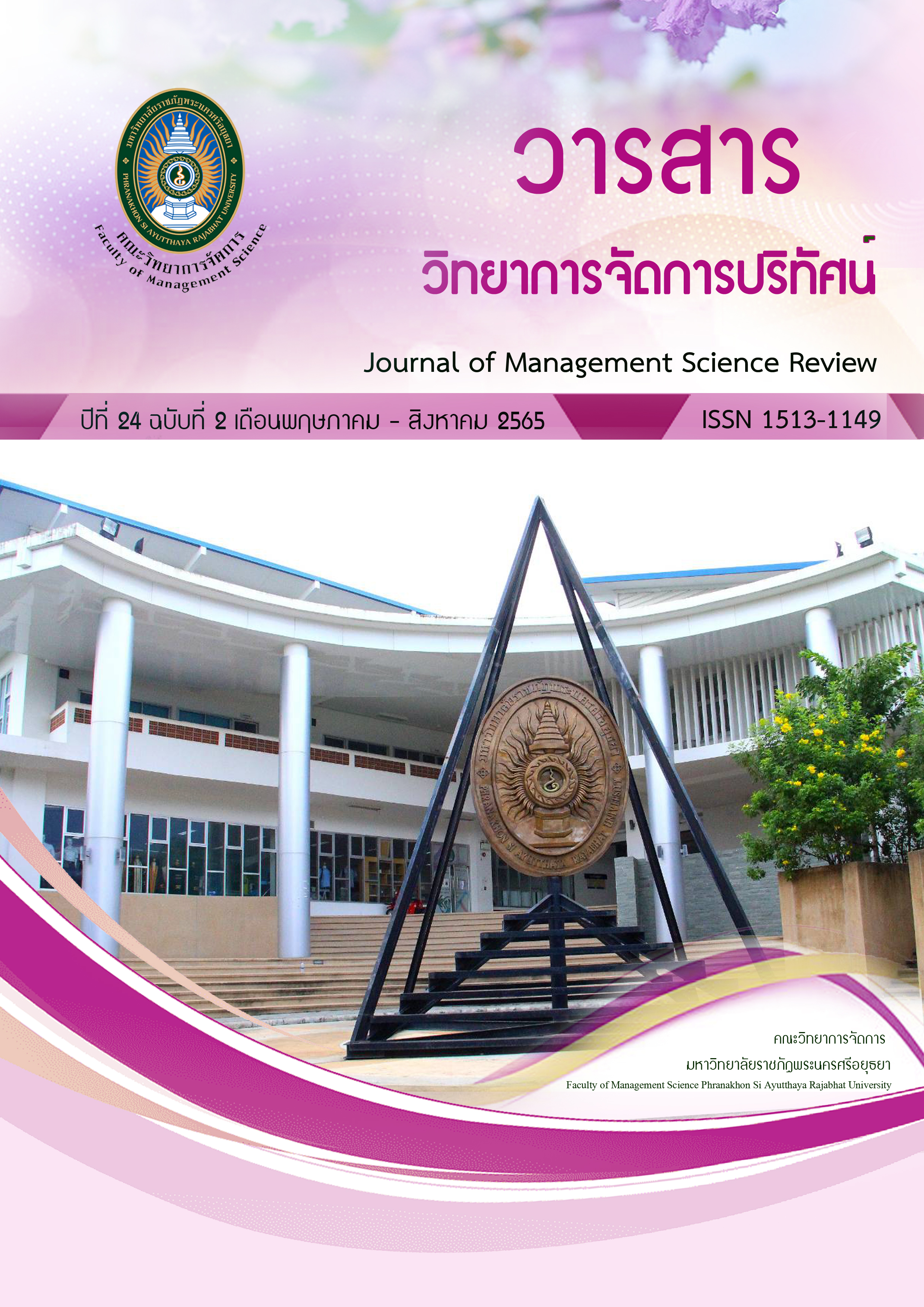Factor Analysis of Innovation Performance in Small and Medium Enterprise in the Food Sector
Keywords:
Innovation Performance, Small and Medium Enterprise, Food SectorAbstract
The purpose of this research was to analyze the components of innovation capability of small and medium-sized businesses in the food field. by conducting quantitative research. A sample of 400 subjects was collected using the research tool, which was a questionnaire that was tested for accuracy. Statistics in the analysis are based on mean and elemental analysis.
The results showed that the conformity index was appropriate and harmonious. (Chi-square=2.31, df=2, P-value=0.314, RMSEA=0.020). Knowledge from research indicated that product quality should be developed to be outstanding and unique in each entrepreneur, as well as being able to attract consumers and be able to compete using social media. Entrepreneurs need to adapt to online platforms and develop their packaging by enhancing the design and construction for more suitable packaging, and maintaining product quality for a long time.
For research recommendations at the enterprise level, service development, product development, manpower development, and community-level service should require product development to make each location unique and different, with the need to meet the quality standards of the specified products. In addition, at the policy level, there must be a policy to promote entrepreneurs to be able to compete with the international market as well as to develop products with higher added value.
References
วัชรพงษ์ อินทรวงศ์ และ ปัทมา สุริยกุล ณ อยุธยา (2561, พฤษภาคม-สิงหาคม). การศึกษาปัจจัยเชิงสาเหตุด้านภาวะผู้ประกอบการและนวัตกรรมที่มีต่อผลการดำเนินงาน. วารสารชุมชนวิจัย, 12(2), 101-116.
ของกลุ่มวิสาหกิจชุมชนแปรรูปอาหารจังหวัดนครพนม. (มิถุนายน, 2564). ค้นเมื่อ 29 มิถุนายน 2564, จาก https://so04.tci-thaijo.org/index.php /NRRU/ article/view/164639.
เอสเอ็มอี วัน (SME one). (2564). SME สำคัญกับระบบเศรษฐกิจประเทศไทยอย่างไร. (2564, มีนาคม), ค้นเมื่อ 24 มีนาคม 2565, จาก: https://www. smeone.info/ posts/view/284.
Adams, P. et. al. (2019, April). Strategic orientation, innovation performance and the moderating influence of marketing management. Journal of Business Research, 97, 129-140.
Aujirpongpan, S. & Hareebin, Y. (2020). The Effect of Strategic Intuition, Business Analytic, Networking Capabilities and Dynamic Strategy onI nnovation Performance: The Empirical Study Thai Processed Food Exporters. Journal of Asian Finance, Economics and Business, 7(1), 259–268.
Čučković, N. & Vučković, V. (2021, January – March). THE EFFECTS OF EU R&I FUNDING ON SME INNOVATION AND BUSINESS PERFORMANCE IN NEW EU MEMBER STATES: FIRM-LEVEL EVIDENCE. ECONOMIC ANNALS, 66(228), 7-42.
Eurostat. (2021). Archive: Europe 2020 indicators - R&D and innovation. Retrieved June 26, 2021, from .https://ec.europa.eu/eurostat/statistics-explained/index.php?title= Archive:Europe _2020_indicat ors_-_R%26D_and_innovation &oldid=345979.
Global Stat. (2021). The Most Innovative Countries, Ranked by Income Group. Retrieved June 26, 2021, from https://www.visualcapitalist.com/national-innovation-the-most-innovative-countries-by-income/.
Gunday, G. et al. (2009). Effect of innovation types on firm performance. International Journal Production Economics, 133, 662–676.
Irwanti, A. et. al. (2019). The role of innovation capacity and technology adoption towards product innovation performance measurement in micro small enterprises food industry. International conference on food and bioindustry, 443, 1-17.
Rauter, Romana et. al. (2019, October–November). Open innovation and its effects on economic and sustainability innovation performance. Journal of Innovation & Knowledge, 4(4), 226-233.




